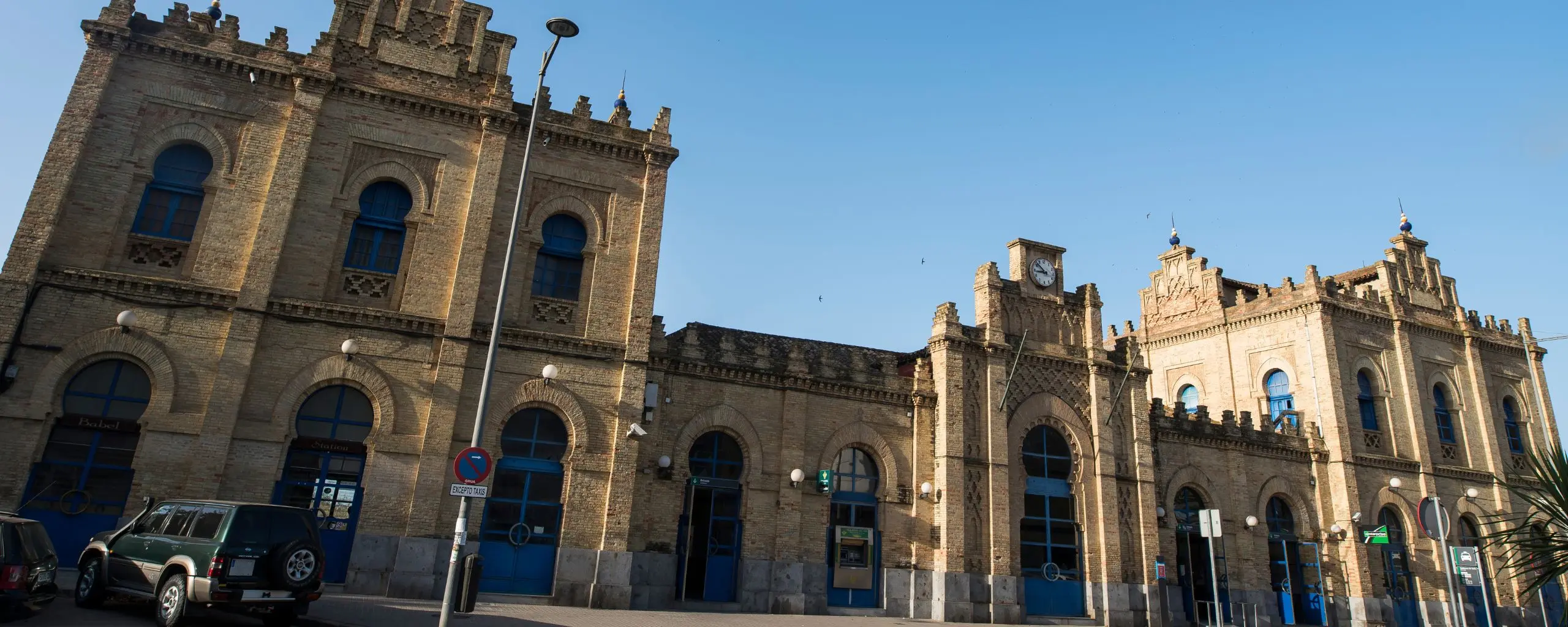The Seville Station is a monument of Huelva that presents a neo-Mudejar style with a marked Andalusian character.
The impact of the acquisition of the mines by the English was not long in coming. The first of the needs addressed was the transportation of the mineral from the northern provincial mines, which meant that important and modern infrastructures had to be created to replace the traditional use of pack animals. Railway networks, steam trains, bridges and viaducts were built, and at the final exit point of the mineral, loading and unloading docks.
With the old rattle of the locomotive, with nostalgic steam exhausts, the construction of this Seville Station was completed before the end of the nineteenth century, at the height of the times of progress.
By Royal Order of July 17, 1858, Carlos Lamiable was authorized to carry out the railroad project, however, it would not be executed until 1877 by the private company created by Guillermo Sundheim and Doetsch. It thus became the first railroad built by private hands. It was inaugurated in March 1880. Today we can contemplate the Estación de Sevilla of 1888, erected in neo-Mudejar style of great Andalusian flavor. It is called Estación de Sevilla, because of the end of the railway line that linked Huelva with Seville.

The architecture of the Station also responded to its moment, the interest that existed during the 19th century in the architectural styles of other eras. This new trend had very different roots: one could speak of renewal and religious revitalization, of identifications with a historical past, of evocations mythologized by romantic feelings, but also of the search for a style that would open new paths to the crisis that had begun with the abandonment of the classical model, thus beginning the era of HISTORICISM and within it, the neo-Mudejar to which the station belongs, and which is possibly the historicism that is best identified with what is genuinely Hispanic and Andalusian.
Not only was Huelva’s main station built, but it was followed by the rest of the stops and terminals of the line in the same style, very much to the taste of its promoter, the German businessman Guillermo Sundheim, at that time one of the main architects and promoters of the economic and socio-cultural activity of the city.
Sundheim chose as builders the engineers Jaime Font y Escolá and Pedro Soto, who designed a building with two side towers of greater height and volume than the central body, which protrudes slightly outward.
The Seville Station is located at Avenida de Italia s/n.